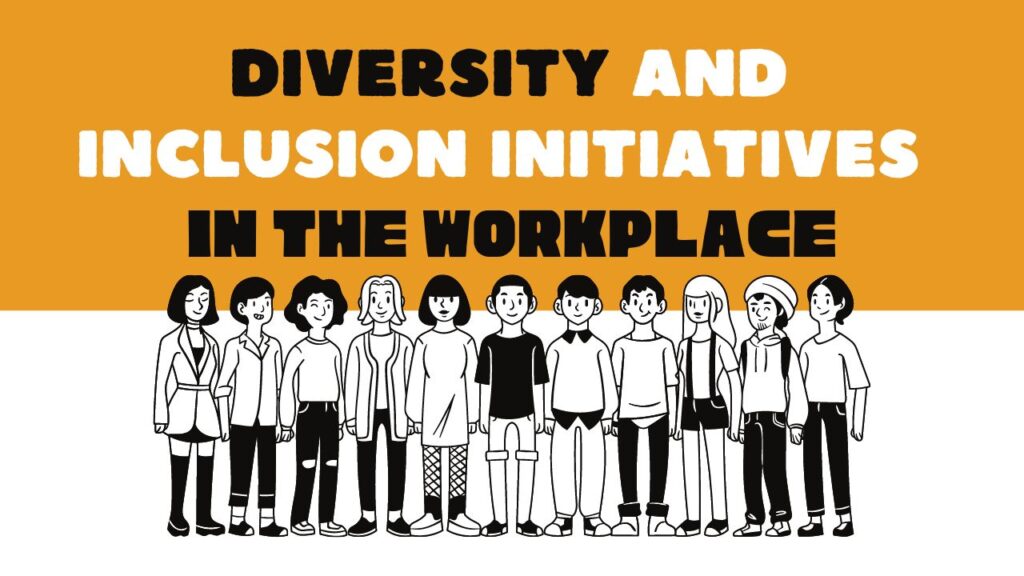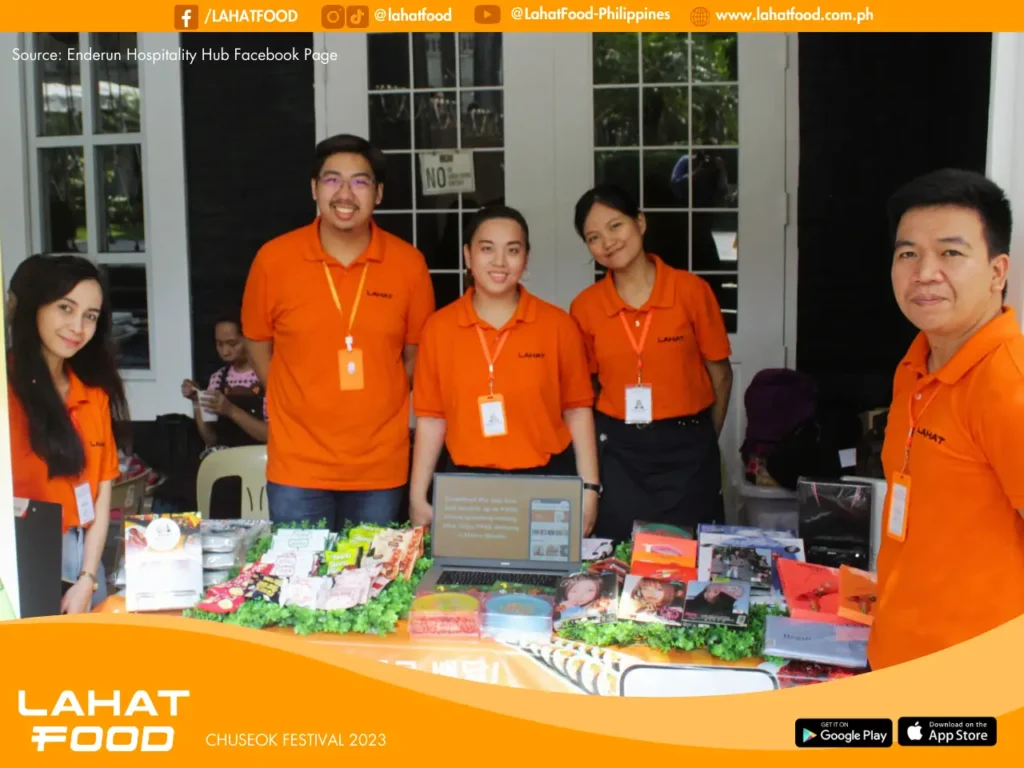
One’s workplace heavily affects the outlook and satisfaction they have for their job. It usually dictates whether an employee lasts with a company or if it pushes them out to seek better opportunities. Since most employers, and even the law, require an 8-hour work day, to be considered a regular, full-time employee, it is not careless to say that employees spend a huge chunk of their time, and even their lives, in the workplace or engaged in their jobs. Because of this, it is important to include various initiatives that would entice employees to stay at their jobs and encourage them to do their jobs better. These initiatives open the door for increased productivity, efficient employees, and an overall better-performing company.
Diversity and Inclusion, differentiated

One of the few priorities for increasing employee retention and satisfaction is diversity and inclusion initiatives. These initiatives are geared towards empowering the employees and in return, these empowered employees produce better output and are not limited by working conditions. Diverse working conditions and inclusivity among employees encourage a culture of innovation and a peaceful work environment.
Employers worldwide usually use diversity and inclusion to make themselves appealing to applicants and prospective employees. It becomes a great selling point that guarantees equal opportunities to the employees inside the company as well as employment which makes them involved in all areas of the workplace (Bush, 2021). Although commonly used together, diversity and inclusion are not the same thing. Diversity refers to welcoming and encouraging different traits, characteristics, and skills a person may offer, whereas inclusion refers to the actual feeling of belonging where a person feels heard and empowered to participate (Page, 2023).
Diversity and Inclusion matter
Companies continually integrate diversity and inclusion efforts in their culture, as recent trends demonstrate. The Philippines has been integrating practices aimed at this initiative and is now considered less homogenous in terms of gender and sexual orientation, age, educational attainment, social status, and even religion (Banono, Jr. 2023). Companies with such initiatives may have a lot more to gain.
Aside from profit or monetary gains, they have shown that they have bested their competition, making them more appealing to more talent and fostering a culture of creativity and collaboration (Dayoan, 2023). This only means that diversity and inclusion initiatives also shape a company’s reputation since it has been showing that both consumers and investors actively seek companies that are ethical and at the same time, aware of their social responsibility, thus, these companies garner more support than those companies who lack diversity and inclusion initiatives (Dayoan, 2023).
Diversity and Inclusion Initiatives

Breaking Gender and Age Barriers
In the hopes of becoming more diverse and inclusive, companies have significantly removed discrimination against women, and preference to men. For the longest time, women have had great difficulty penetrating the labor force, with women usually trusted with non-leadership roles. There has been a noticeable increase in women in the labor force, and, notably, more women are breaking through the glass ceiling and occupying managerial or directorial positions (Dayoan, 2023).
Age discrimination is also a thing of the past. Hiring employees from different generations helps foster a more collaborative environment which results in accelerated business outcomes since ideas come from diverse perspectives (Poueriet, 2023).
However, this does not come without issues such as stereotypes and bias. Fortunately, companies have become more resilient with these challenges and have started to integrate actual initiatives such as offering leadership positions based on talent and skill rather than age or seniority, as well as mentoring and reverse-mentoring programs which make sure that employees of all ages can learn from each other (Heaslip, 2022). It also helps to create benefits that employees from different life stages will find appealing – Baby Boomers will find retirement programs interesting versus Gen Zs who are looking for personal and professional opportunities for growth (Heaslip, 2022). Some companies also practice blind hiring to overcome age bias in as early as the hiring process (Heaslip, 2022).
Moving beyond Disability
Another initiative is the actual inclusion of persons with disability (PWD) in the workforce. PWDs are usually discriminated against and deprived of equal opportunity due to their disability. However, it has been shown repeatedly that hiring them may actually be good for business. Companies such as CVS and Microsoft have said that hiring people with disabilities has improved their overall income and have experienced a stronger sense of loyalty (Herson, 2021). In the Philippines, companies who hire PWD employees are greeted with admiration and commendation. Companies, such as Shakey’s Pizza Asia Ventures Inc., have been actively hiring PWDs. This is a part of their new inclusive hiring initiative (Camus, 2022). This step greatly helped their image and branding since they were applauded by the media and were set as an example for other companies to follow.
Promoting Diversity and Inclusion

Aside from these initiatives currently observed in the workforce, there are also a couple of practices which may propel towards a more diverse and inclusive workplace. This includes the conduct of diversity and inclusion trainings and seminars which will raise awareness regarding existing prejudice and imbibe within the employees the value of inclusivity (Romuga, 2023). Further, a continued support is also of importance to ensure that diversity and inclusion does not stop during the hiring process. More importantly, this should be felt by the employees during their stay with the company. They should be able to feel heard, included, and that what they say and think matters to the managers, and to the company itself.
At the end of the day, what really drives employee retention is a pleasant and harmonious environment where their voices and opinions matter. The environment which would foster growth and take care of their entire well-being. These initiatives help make sure that employees are satisfied and highlights the feeling that employees matter just as much as their actual contributions. These initiatives are not just trends that companies should hop on, rather, these should be inculcated in the very company culture that they have, thus making it second nature for them to always be inclusive and geared towards promoting diversity
References:
Banono Jr, J. (2023). A Study of Organizational Climate, Diversity, and Inclusion among Filipino Employees. Asian Journal of Multidisciplinary Research & Review, 4(4), 17-29.
Bush, M. (2021, April 22). Why is Diversity and Inclusion in the Workplace Important?. Great Place To Work. https://www.greatplacetowork.com.ph/reports/why-is-diversity-inclusion-in-the-workplace-important/
Camus, M. (2022, September 13). Shakey’s hires seniors, PWDs in Manila. Inquirer.net. https://business.inquirer.net/362185/shakeys-starts-senior-citizen-pwd-hiring-program
Dayoan, S. (2023, September 11). Advancing Diversity, Equity and Inclusion in the Workplace. KPMG. https://kpmg.com/ph/en/home/insights/2023/09/advancing-diversity-equity-and-inclusion-in-the-workplace.html
Heaslip, E. (2022, August 1). How To Embrace Generational Diversity in the Workplace. Vervoe. https://vervoe.com/generational-diversity-in-the-workplace/
Herson, K. (2021, December 3). Seven Reasons Why Hiring People With Disabilities is Good for Business. Forbes. https://www.forbes.com/sites/forbesbusinesscouncil/2021/12/03/seven-reasons-why-hiring-people-with-disabilities-is-good-for-business/?sh=4d4fb9118327
Page, M. (2023, September 12). Diversity, Equity and Inclusion in the workplace: An employer’s guide. MichaelPage. https://www.michaelpage.com.ph/advice/management-advice/diversity-and-inclusion/diversity-equity-and-inclusion-workplace-employers%E2%80%99-guide
Poueriet, A. (2023, September 8). Bridging the Generation Gap in the Workplace. LinkedIn. https://www.linkedin.com/pulse/bridging-generation-gap-workplace-ana-poueriet/
Romuga, G. (2023, August 24). Fostering Diversity and Inclusion:Pioneering Steps for an Equitable Hiring Process. HR UPLB. https://hrdo.uplb.edu.ph/recruitment-selection-and-placement/fostering-diversity-and-inclusion-pioneering-steps-for-an-equitable-hiring-process/

